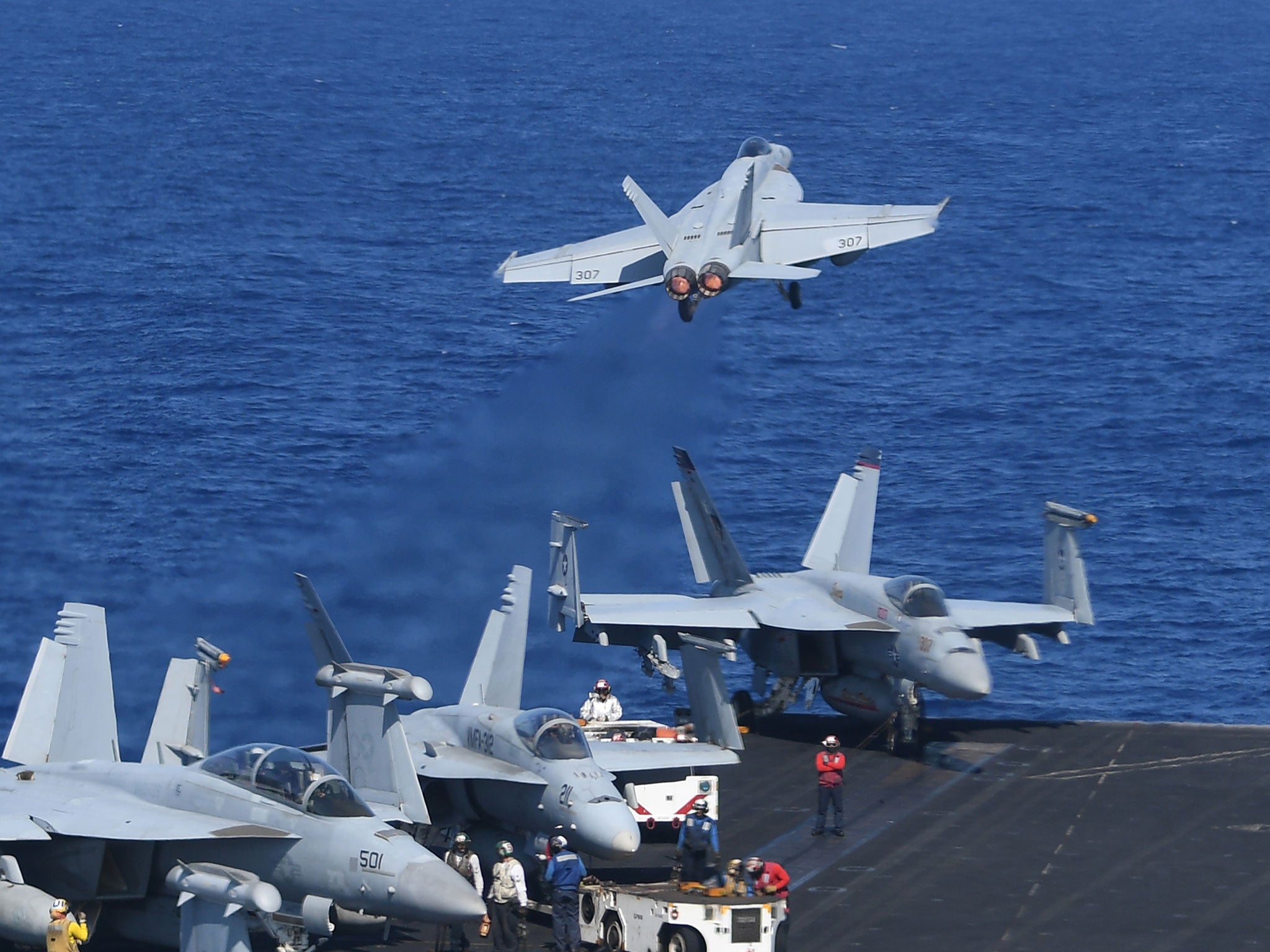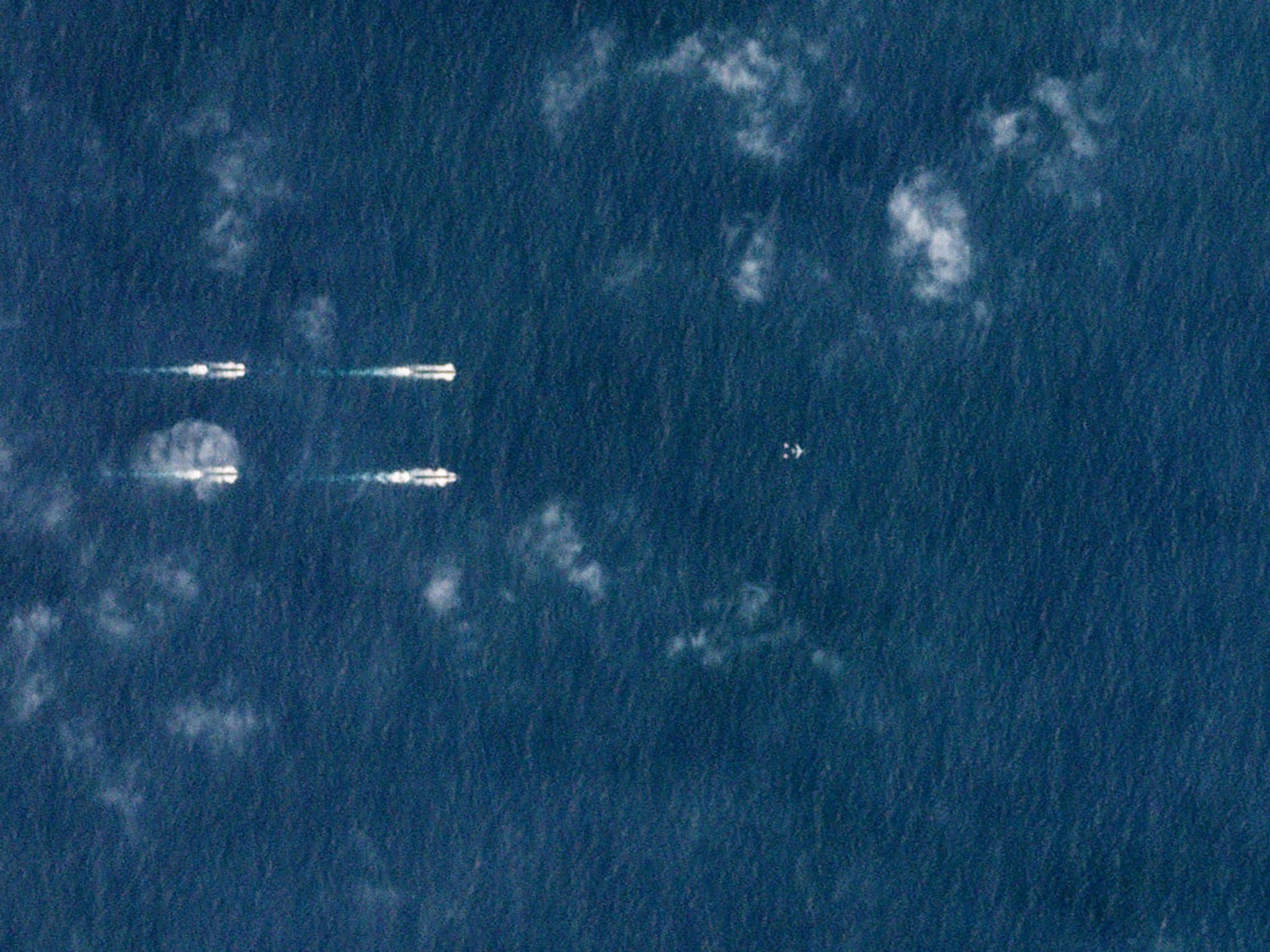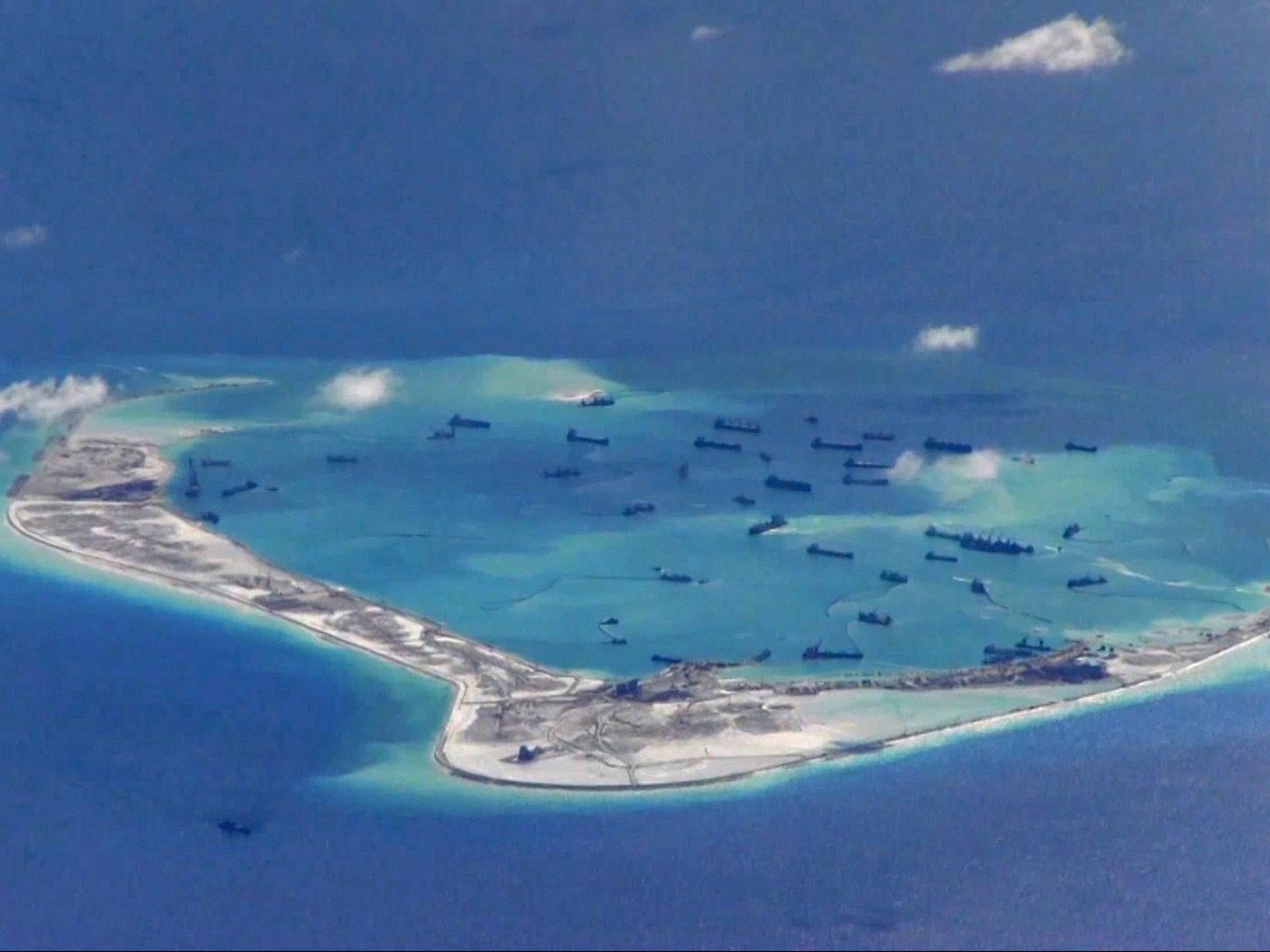US warships sail through South China Sea amid escalating tensions with Beijing
Presence of USS Theodore Roosevelt aircraft carrier comes days after what analysts say was an unusually large display of China's increasing naval might

Your support helps us to tell the story
From reproductive rights to climate change to Big Tech, The Independent is on the ground when the story is developing. Whether it's investigating the financials of Elon Musk's pro-Trump PAC or producing our latest documentary, 'The A Word', which shines a light on the American women fighting for reproductive rights, we know how important it is to parse out the facts from the messaging.
At such a critical moment in US history, we need reporters on the ground. Your donation allows us to keep sending journalists to speak to both sides of the story.
The Independent is trusted by Americans across the entire political spectrum. And unlike many other quality news outlets, we choose not to lock Americans out of our reporting and analysis with paywalls. We believe quality journalism should be available to everyone, paid for by those who can afford it.
Your support makes all the difference.A US aircraft carrier is sailing through the disputed South China Sea in a show of American force.
In a span of 20 minutes, 20 F-18 fighter jets took off and landed on the USS Theodore Roosevelt, providing a powerful display of military precision and efficiency.
The nuclear-powered warship, leading a carrier strike group, was conducting what the US military called routine training in the strategic sea, which China claims almost in its entirety.
The US is not alone in carrying out naval patrols in the strategic waterway, where Chinese, Japanese and some southeast Asian navies operate, possibly increasing tensions and risking accidents at sea.
“We have seen Chinese ships around us,” Rear Admiral Steve Koehler, the strike group commander, said on board the three-decade-old carrier.
“They are one of the navies that operate in the South China Sea but I would tell you that we have seen nothing but professional work out of the ships we have encountered.”
Navies in the western Pacific, including China and nine southeast Asian countries, have been working on a code of unexpected encounters (CUES) at sea to avoid conflict.
The USS Theodore Roosevelt’s presence in the South China Sea comes days after China’s massive air and naval drills in the area, in what some analysts described as an unusually large display of Beijing’s growing naval might.

The US has criticised China’s apparent militarisation of manmade islands and carried out regular air and naval patrols to assert its right to freedom of navigation in stretches of the sea.
“This transit in the South China Sea is nothing new in our planning cycle or in a reaction to that. It is probably by happenstance that all that is happening at the same time,” said Mr Koehler, who gave a tour of the carrier to Philippine military officials and watched flight operations aboard the 100,000-tonne warship.
“All of the operations that we do in and around the South China Sea or any of the bodies of water we operate in, there is a function of international law and that is ultimately what we want to recognise,” he said.
China has long objected to US military operations off its coasts, even in areas Washington insists are free to international passage.
“They [China] certainly have the right to exercise off their coast like we do, nor are they necessarily in charge of our transit cycle, but our deployment’s been planned,” Mr Koehler said.

On Tuesday, China’s defence ministry said the country was entitled to strengthen its defences on islands in the South China Sea, but said those measures aren’t directed at any specific countries.
China’s military deployments are “the natural right of a sovereign nation that helps safeguard national sovereignty and security,” Ren Guoqiang said in a statement posted on the ministry’s website.
They also help protect navigation safety, “serve to ensure regional peace and stability and are not directed at any country,” Mr Ren said.
Join our commenting forum
Join thought-provoking conversations, follow other Independent readers and see their replies
Comments